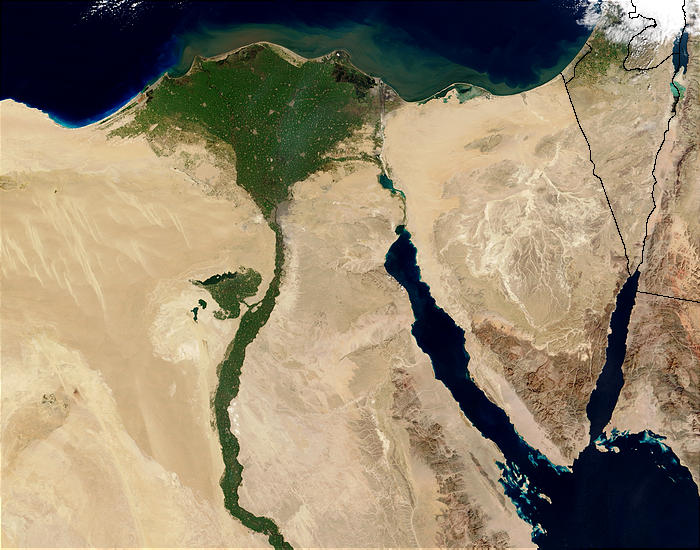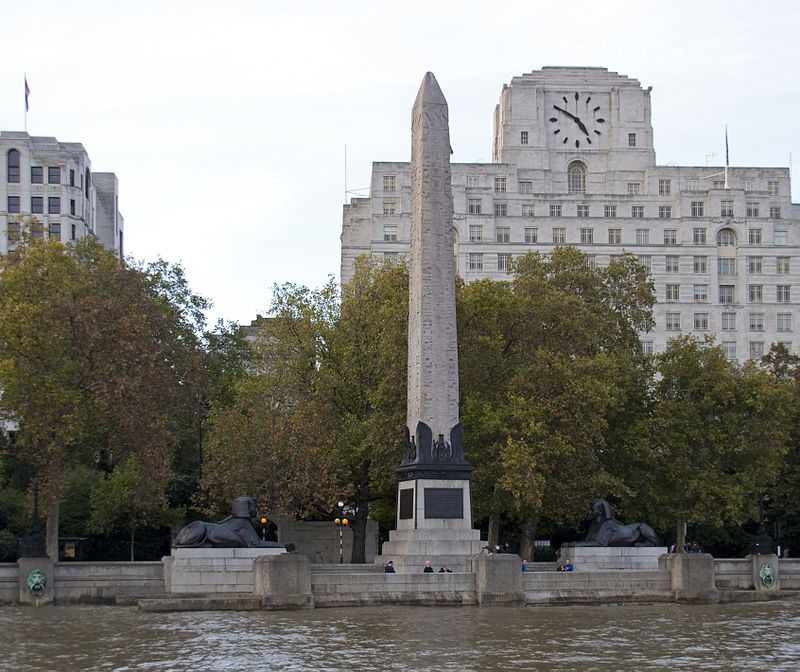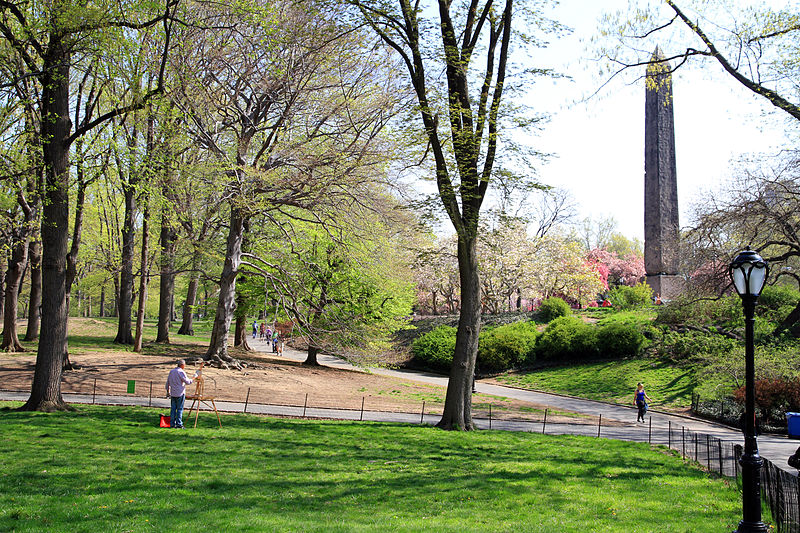
Let’s Take Five #2.
Many of us make a very common historical error when reading the Bible. We open up the first few chapters of the Book of Exodus and read about the Israelites’ enslavement in Egypt, and we automatically imagine the slaves building pyramids. We might even assume, for instance, the ragged Hebrew slaves hauling the massive stones to erect the Great Pyramid at Giza (pictured above). Unfortunately, this is not historically possible. The Giza pyramids date to roughly 2580 BCE. They were indeed built by slaves, but not by the Hebrews. The enslavement of the Israelites – the descendants of Jacob/Israel – took place at least one thousand years later, sometime in the 13th century BCE. So what exactly did the Israelite slaves build?
Let’s take a closer look at the opening chapter of the Book of Exodus, following the death of Joseph:
Now a new king arose over Egypt, who did not know Joseph. 9 He said to his people, “Look, the Israelite people are more numerous and more powerful than we. 10 Come, let us deal shrewdly with them, or they will increase and, in the event of war, join our enemies and fight against us and escape from the land.” 11 Therefore they set taskmasters over them to oppress them with forced labor. They built supply cities, Pithom and Rameses, for Pharaoh. 12 But the more they were oppressed, the more they multiplied and spread, so that the Egyptians came to dread the Israelites. 13 The Egyptians became ruthless in imposing tasks on the Israelites, 14 and made their lives bitter with hard service in mortar and brick and in every kind of field labor. They were ruthless in all the tasks that they imposed on them. (Exodus 1:8-14)
Although the “new king” in verse 8 is never named, he is widely believed to be Rameses II, who ruled approximately during the years 1290–1224 BCE. The Bible is quite specific about the site of their enslavement; the two store cities mentioned explicitly in verse 11 are Pithom and Rameses. Pithom is thought to be a Hebrew pronunciation of the Egyptian name Per Atum, which means “The House of Atum,” the god of the setting sun; Rameses is presumably named after Rameses II, the famous pharaoh at the time of the Exodus story. This late 13th century dating is corroborated by the Merneptah Stele (ca. 1208 BCE), which describes “Israel” as a newly arrived semi-nomadic population in the Land of Canaan in the years immediately after the reign of Rameses II.

The store cities of Pithom, Rameses and On were all located on the eastern flank of the Nile Delta, the green triangle at the top of the image. Notice the stark contrast between the desert and the lush green created by the Nile River, which spews a cloud of fine sand into the Mediterranean Sea that is transported by currents to the southern coast of the Land of Israel. This is a NASA satellite photograph taken from space.
Interestingly, in the Septuagint – the ancient Greek version of the Hebrew Bible – this verse is slightly different than what appears in our modern Bibles. It reads as follows: “And they built strong cities for Pharaoh, both Pithom (πιθωμ), and Rameses (Ραμεσσῆ), and On, which is Heliopolis (῎Ων, ἥ ἐστιν ῾Ηλιούπολις).” The third city, On, does not appear in our standard Bibles, which are usually based on the Hebrew Masoretic version. But a good argument can be made that it should. Let’s take a closer look at this site.

A drawing of Heliopolis from the 1840s by Karl Richard Lepsius
On, also known as Heliopolis – which means “House of the Sun” in Greek – was an important holy site in the ancient Egyptian religion. It is sometimes referred to by 19th century historians as the “Athens of ancient Egypt.” It is located in the neighborhood of Al-Matariyyah, about seven miles northeast of Cairo’s city center at a site called Tel Hisn. The name “House of the Sun” is a reference to the worship of various sun gods, including Re and the Pharaoh himself. This same title was translated into in Hebrew as “Bet Shemesh” (בית שמש) by the prophet Jeremiah, who prophesied the future destruction of Egypt at the hands of the Babylonians as follows:
He shall kindle a fire in the temples of the gods of Egypt; and he shall burn them and carry them away captive; and he shall pick clean the land of Egypt, as a shepherd picks his cloak clean of vermin; and he shall depart from there safely. He shall break the pillars of the House of the Sun, which is in the land of Egypt; and the temples of the gods of Egypt he shall burn with fire. (Jeremiah 43:12-13)
The English word “pillars” in verse 13 is a translation of the Hebrew word matzevot (מַצְּבוֹת), which in Biblical Hebrew refers to a large stone set up as a memorial or for sacred purposes. For example, the stone pillar erected by Jacob at Bethel is called a matzevah (Gen. 35:14), the pillar erected by David’s rebellious son Absalom in Jerusalem’s Valley of the Kings is called a matzevah (2 Sam. 18:18), and the Canaanite sacred pillars that the Lord orders the Israelites to destroy are also called matzevah (Exod. 23:24).

Popularly known as the Tomb of Absalom, this is in fact a Hellenistic style monument marking the tomb of a prominent – perhaps royal – Jerusalemite from the 1st century BCE. It is located within the Kidron Valley, to the immediate east of Jerusalem’s Temple Mount. In the background you can see the Mount of Olives rising up.

A 9th century BCE stone pillar with a representation of the Canaanite storm god Hadad, from Bethsaida (Geshur) on the northern side of the Sea of Galilee. This is an example of the “matzevot” that the Bible commands the Israelites to destroy.
But the Egyptian version of a matzevah referred to by Jeremiah is something else entirely: an obelisk, a four-sided monolithic pillar with a pointed top. The city of On (Heliopolis) was famous for its obelisks in the days of the pharaohs. The word “obelisk” comes from the Greek obelos (ὀβελός), which means a skewer, because such stone pillars were thought to resemble spits for the grilling of meat.

The Cairo suburb of al-Matariyyah, the ancient site of Heliopolis as it looks today.
The site of Heliopolis does not contain very much today. Beginning in the 19th century, it was significantly excavated and most of the antiquities were removed and placed in museums. One of the few remains left in situ is an obelisk dating to the rule of Senusret I (1971-1926 BCE). Made from a single piece of red granite, it is 68 feet tall and weighs 120 tons. Here is what the obelisk looked like in a photograph from the late 19th century:

Here is what the same obelisk, known to the locals as the “Al-Massallah obelisk” looks like today:
This impressive pillar is the earliest example of an ancient Egyptian obelisk still found in its original location. The obelisk, pointing upwards, symbolizes the power of the sun god. Because Heliopolis was a sacred city dedicated to the worship of the sun, the city contained dozens of obelisks in antiquity. However, almost all of these were removed and re-erected in European cities by the Romans or Napoleon. Indeed, many of the famous Egyptian obelisks found in Western capitals were taken from Heliopolis.
Therefore, in this edition of Let’s Take Five, I would like to show you five examples of famous obelisks taken from Heliopolis.
(1) “Cleopatra’s Needle” on the banks of the Thames in London:

(2) “Cleopatra’s Needle” in New York City’s Central Park:

(3) The Vatican Obelisk in St Peter’s Square:

(4) The Macuteo Obelisk in front of the Pantheon in Rome:

(5) Flaminio obelisk in the Piazza del Popolo, Rome
Have you ever seen any of these famous monuments in person? If so, you probably did not realize they originally came from the humble Cairo suburb of al-Matariyyah. All of these imposing obelisks were created in the second half of the second millennium BCE. Prior to the modern era, all these obelisks were found in situ in Heliopolis. It might very well be that the difficult work of quarrying such large pillars, and transporting them over great distances without cracking them, was performed by the very Hebrew slaves that would eventually flee Egypt under Moses. Although no less impressive, this is quite different from the pyramids that we imagine in our mind’s eye when we read the opening chapters of the Book of Exodus!







Wow great post! Very informative!
Many say that the pyramids were built by highly skilled laborers, assuming bassd on biblical evidence that the Israelites built storage cities not pyramids, is there actual evidence that it was built by the enslaved, and if so, who were the enslaved people who built the pyramids?
I lived in NY (LI) for 40 years and never really explored Central Park – and now am sorry that I did not.
Thank you for all the info provided on your site.
I’m still trying to figure out what exactly did ‘Jews’ do when they were slaves in Egypt. Supposedly they were scribes for pharoahs who were illiterate while Jews were educated and could read and write.
How many of the writings on Egyptian tombs, et al, were written by slaves aka Jews?
I appreciate all your work and studies that went into your article.
[…] خوفو في عام 2530 قبل الميلاد، في حين أن العهد القديم والأبحاث الإسرائيلية تذكر أن نبي الله موسى عاش بين القرنين الرابع عشر […]